How to grow Daphne
This shrubby member of the thyme family is grown for its strongly scented flowers, relatively small size, and neat form. Different species bloom at different times of the year, though particularly prized by gardeners are the winter and spring-flowering varieties which provide fragrance and beauty at a time of otherwise scarcity. Daphne can be evergreen, semi-evergreen, or deciduous, and depending on the species can be grown in sun or shade.

Key Information
Position – Light dappled shade is ideal, though most species will tolerate full sun provided the roots are kept cool, shaded, and moist (e.g., with a pebble mulch or groundcover planting). Some will also tolerate deep shade. See ‘Horticultural Divisions’ below for more information.
Soil type – Most daphnes prefer a moist, well-draining soil which can be neutral, slightly alkaline, or slightly acidic.
Daphne mezereum and D. laureola are the species most tolerant of a heavy, clay soil. D. mezereum is the one most likely to thrive in very chalky, alkaline conditions.
Position
Soil Conditions
Hardiness

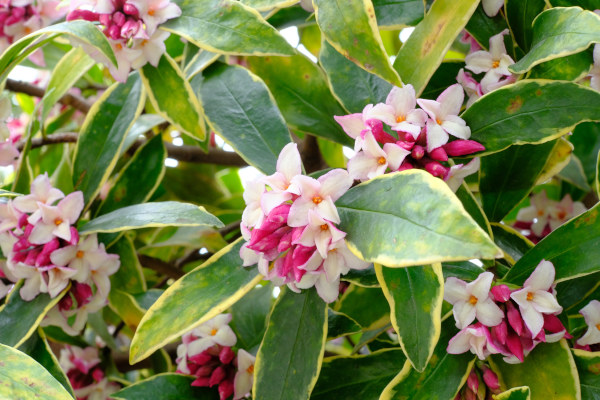
Where & when to plant Daphne
Horticultural divisions –
Species | Flowering time | Tolerant of deep shade | Hardiness | Foliage | Dwarf form available (under 1m) | |||
Evergreen | Deciduous | Semi-evergreen | Yes | No | ||||
Daphne odora | Midwinter to early spring |
| H4 (-5°C to -10°C) | ü |
|
|
| ü |
D. tangutica | Late spring to early summer |
| H5 (-10°C to -15°C) | ü |
|
|
| ü |
D. x transatlantica | Early spring to late summer |
| H4 (-5°C to -10°C) |
|
| ü | ü |
|
D. sericea | Late spring |
| H6 (-15°C to -20°C) | ü |
|
| ü |
|
D. laureola | Late winter to early spring | ü | H5 (-10°C to -15°C) | ü |
|
| ü |
|
D. arbuscula | Late spring to early summer |
| H5 (-10°C to -15°C) | ü |
|
| ü |
|
D. bholua | Late winter to spring |
| H4 (-5°C to -10°C) |
|
| ü |
| ü |
D. cneorum | Late spring |
| H5 (-10°C to -15°C) | ü |
|
| ü |
|
D. mezereum | Late winter to early spring |
| H6 (-15°C to -20°C) |
| ü |
|
| ü |
While daphne can be planted at any time of year provided the ground is not frozen or waterlogged, the best results come from a spring planting.
Given their relatively compact stature and manageably slow growth rate, daphnes are particularly suitable for smaller gardens and spaces. The dappled shade beneath deciduous trees is ideal, though as you’ll have seen above, there is a daphne to suit almost any situation. Winter or spring-flowering varieties are best positioned near a doorway or path so their fragrance can be fully appreciated.
Given a propensity to root deeply, most full-size daphnes tend not to do well in containers. Try smaller, dwarf species instead such as D. cneorum or D. arbuscula.
How to plant Daphne
- For planting in the ground, dig the soil area removing any large stones and weeds and breaking up any lumps. Mix in some organic matter such as manure or garden compost (this is especially important if you’re on sandy soil, as daphnes hate to dry out). If your soil is heavy clay, now is also the time to add a generous helping of horticultural grit. Rake level and firm with your heels. Rake level again.
- Water plants well and allow to drain before planting.
- A good tip is to dig a hole twice the size of the root-ball. Fill with water and allow to drain before placing in the plant.
- Place the plant in the hole. Many daphnes are grafted – this being the most efficient and speedy method of propagation. If you can see a graft union on your plant, aim to have it buried approximately 5cm beneath the surface of the soil, as doing so is known to encourage good rooting and vigorous growth.
- Backfill with soil and firm in gently with your foot.
- Soak well with water.
- Mulch around the base with well-rotted organic matter (again, this is particularly crucial on sandy soil).
- For planting in containers (remember – dwarf species only!), first choose an appropriately sized pot. The best practice is to start just a few centimetres larger than the rootball and increase in size every year or two. Always ensure there are plenty of drainage holes in the bottom.
- If you are using a large or heavy pot, it can be a good idea to fill and plant it in situ to save yourself the trouble of moving once full.
- Use a good quality potting compost with plenty of horticultural grit mixed in, and, if not already present in the compost (check the description on the bag) some slow-release fertiliser granules.
- Start by partially filling the pot with compost. As above, if you can spot a graft union on your plant, aim to have this approximately 5cm beneath the surface of the compost.
- Infill all the space surrounding the root ball with compost, firming down with your fingers then adding a little more so the plant is held tight. Leave a small gap of around 3cm between the compost and the top of the container.
- Pick up the pot and lightly tap on the potting bench or ground a few times to help further settle the compost around the plant.
- Soak well with water.
- A mulch with horticultural grit will look attractive and help to prevent a ‘cap’ or crust forming on the top of the compost (something container plants can suffer due to the artificial nature of their watering).
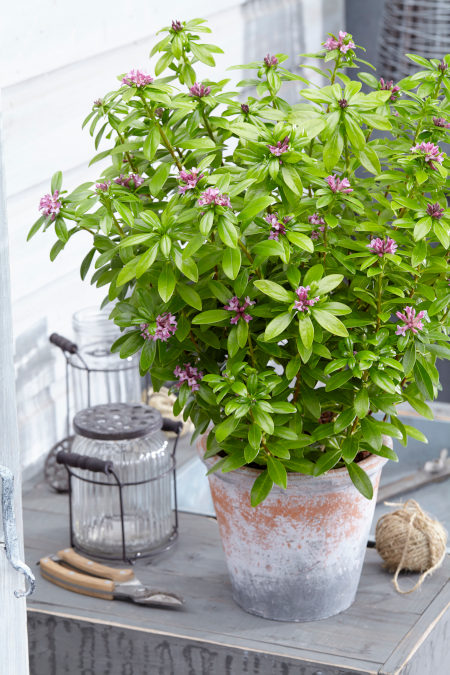
What to plant with Daphne
Plan for a powerful, cool season flush by combining daphne with other winter and spring-interest plants such as sarcococca, edgworthia, chimonanthus, Viburnum x bodnantense, witch hazel, and magnolia. A smattering of snowdrops at ground level will complete the chill-defying display.
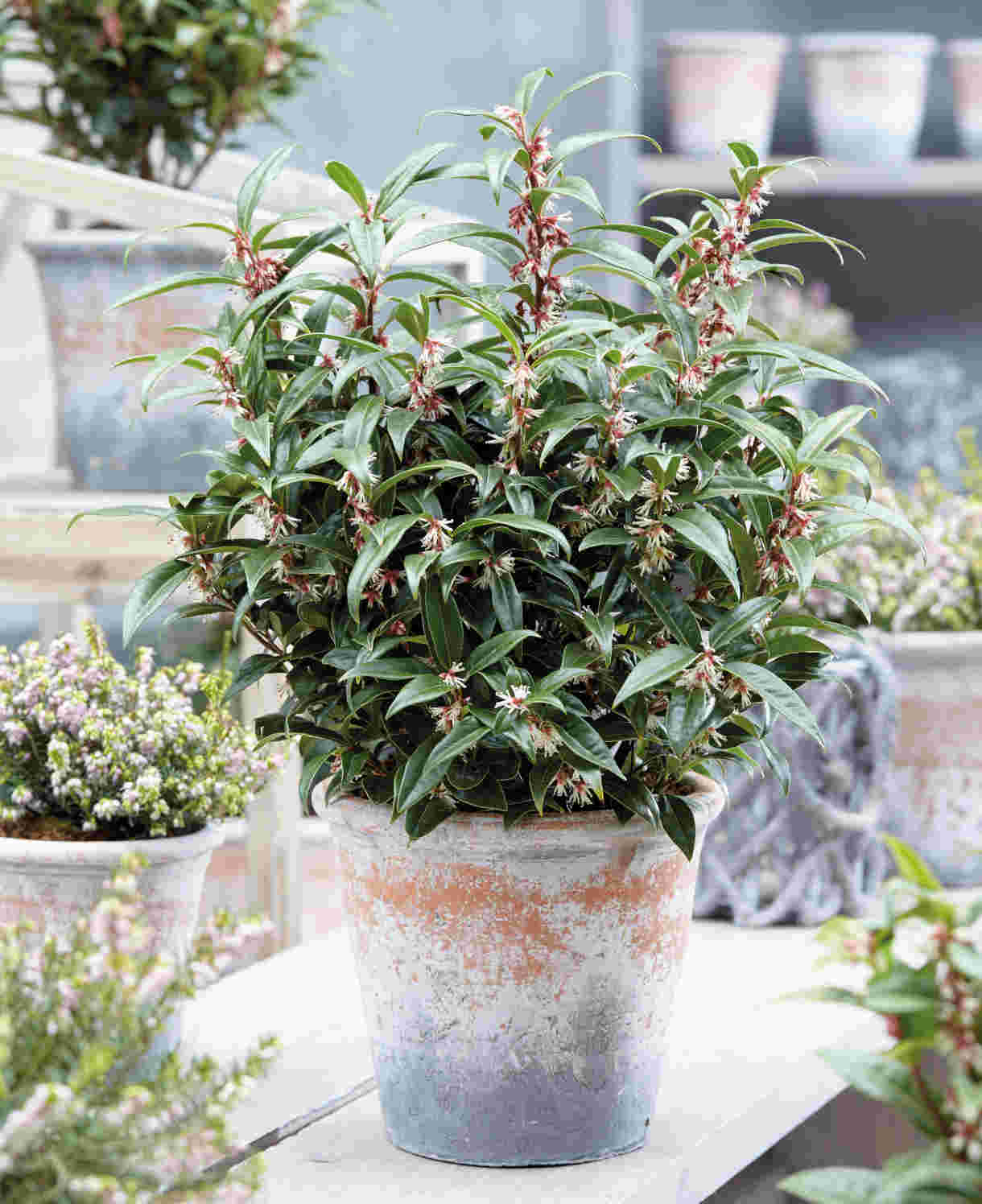
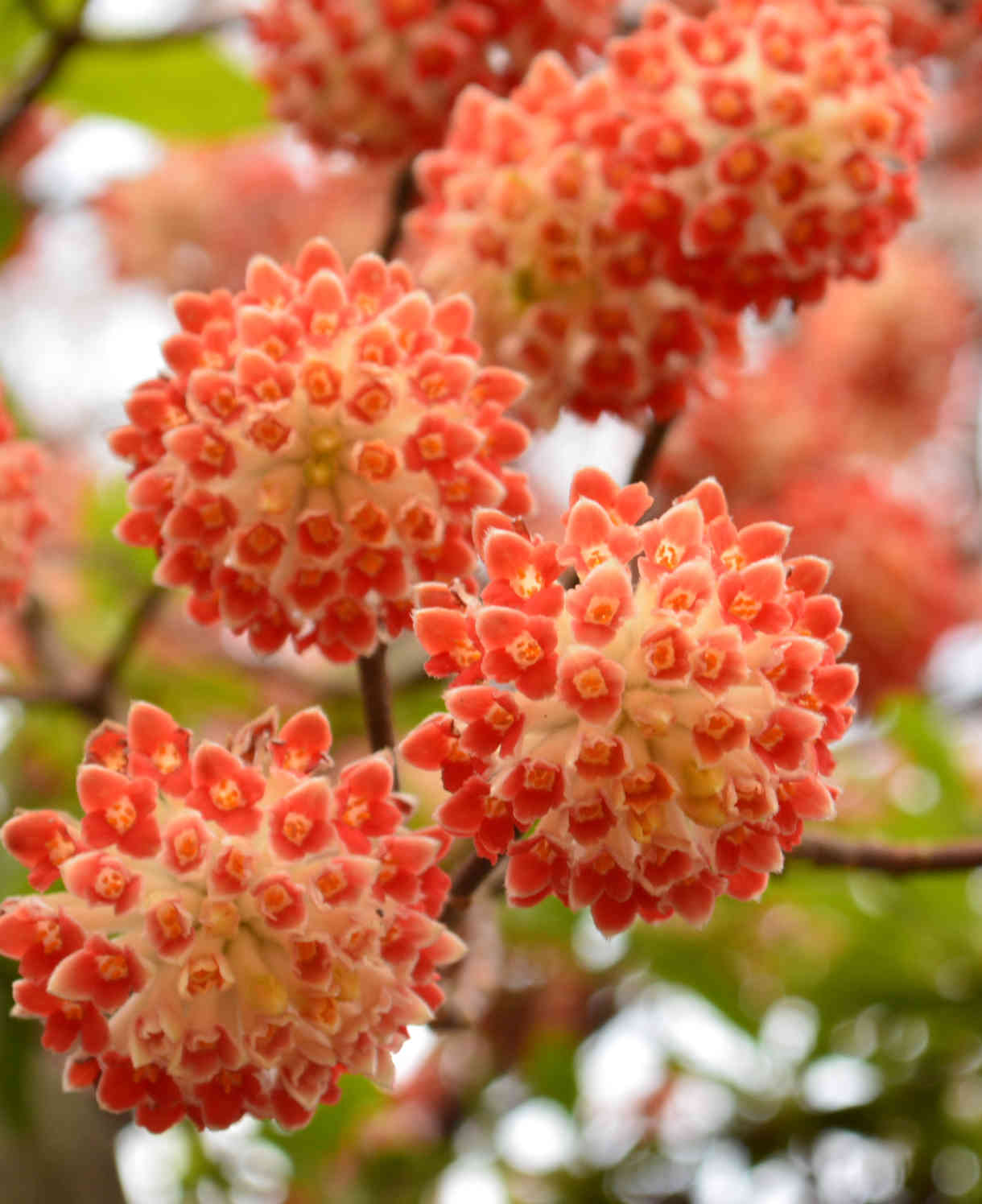
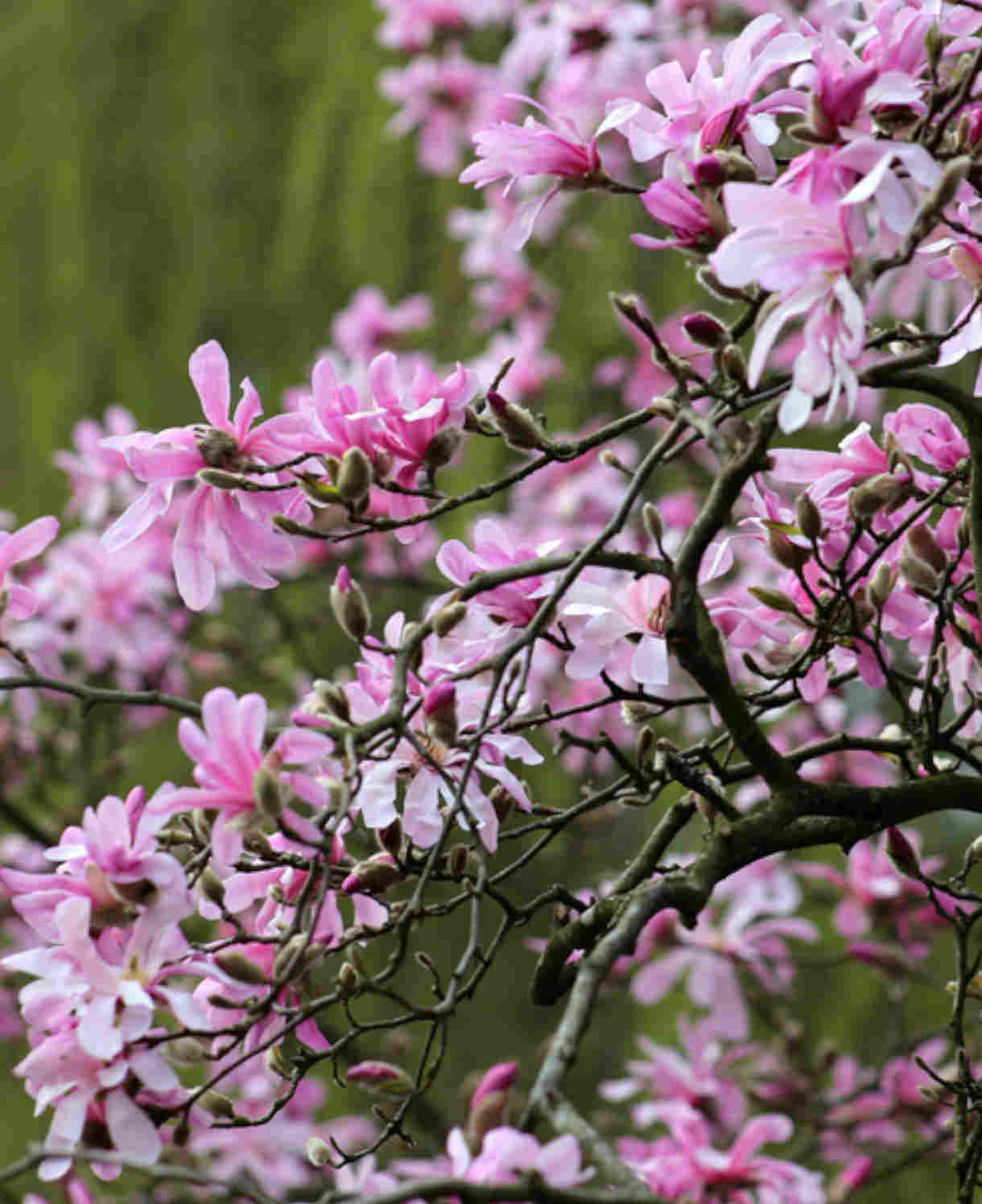
How to care for Daphne
Pruning and Deadheading
Daphnes are best left unpruned, as any cuts tend to cause dieback. Making sure the eventual size is compatible with your allotted space means you can leave it to grow freely without intervention.
Any dead or damaged branches can be removed in early spring or immediately after flowering.
Watering
Daphnes dislike extremes of drought or waterlogging, so you will need to keep any eye on the moisture content of the soil. New plantings require more regular watering than established plants: during the first growing season in the ground, a good soaking every couple of weeks should ensure long-term success (aiming for consistently moist, but not soggy soil). After this, you should expect to water your daphne only in very hot dry spells. A generous mulch every spring will help lock moisture into the soil (see also ‘Feeding’ section below).
Container-grown daphne need to be watered regularly throughout the growing season. Allow the top few centimetres of compost to dry out between soakings.
Feeding
On healthy, fertile soil, an annual spring mulch of well-rotted organic matter (i.e., a layer of manure or garden compost applied to the soil around the plant) should provide sufficient nutrients for your daphne. This has the added benefit of suppressing weeds and locking in moisture. Make sure you leave a small gap between the mulch and the base of the stem, to avoid rotting.
For an extra boost (perhaps your daphne is looking stressed or you garden on poor soil), applying a general purpose granular feed to the surface of the soil and lightly working in (known as a ‘top dress’) can reap benefits. Aim to do this once or twice a year if needed.
Container-grown plants rely more on the gardener for their nutritional needs. Get off to a flying start by making sure you use a good quality compost, then throughout the growing season (March to September) apply a liquid feed at regular intervals mixed according to the instructions. Alternatively, top dress with a general purpose granular feed every three months throughout the growing season.
Cold Protection
Most daphnes are hardy enough to withstand an average UK winter. Plant H4 rated daphne in a sheltered spot (out of cold, drying winds), and move any container-grown daphne (even H6 and H7 rated) to a slightly protected location such as against a south or west-facing wall. In very cold regions, it can also be worth wrapping the containers in fleece, hessian, or bubblewrap just to be on the safe side.
Pests and Diseases
Pests tend to leave daphne alone, though issues such as root rot or sudden dieback may occasionally occur. More often than not, these are down to poor drainage, making it important to choose as well-draining a spot as possible. If your soil is liable to sit wet, incorporate plenty of grit when planting. Make sure you use a very well-draining compost mix if growing in a container (i.e., one with a high grit content).
How to propagate Daphne
Take semi-ripe cuttings in summer using the current year’s growth. This should be firm and woody at the base, while still soft and pliable at the tip. Do note, however, that daphne is notoriously slow-growing and it will take several years for your cuttings to reach a size suitable for planting out.
- Choose non-flowering stems which meet the description above and snip off the plant, aiming to take a longer piece than the ideal eventual length of around 10cm (to allow for trimming).
- Put in a plastic bag straight away to prevent drying out.
- Fill a pot (or several, if you have a lot of cuttings) with a perlite-heavy compost mix (at least 50% perlite).
- Trim the end of the cutting to just below a node (point at which leaves grow).
- Remove lowest leaves and soft tip, leaving 2-4 leaves.
- If the remaining leaves are large, cut them in half with a sharp knife (to reduce water lost through transpiration).
- Insert the cuttings into the compost and water lightly. Several cuttings can be put in the same container if there is enough space to do this without them touching.
- Place in a greenhouse or propagating unit if you have one or covered with a plastic bag on a windowsill if not (out of direct sunlight).
- Keep the cuttings misted and occasionally watered until they root. You will know this has happened when roots emerge out of the bottom of the container.
- Gently remove rooted cuttings and pot them into individual pots. Grow on in a cool yet frost-free environment such as an unheated conservatory, greenhouse, or cold frame, until they are large enough to be planted out following out ‘How to plant daphne’ guidance above.
* Many plants carry Plant Breeders Rights and cannot be propagated for commercial purposes.
Common Daphne questions
- Can you grow daphne in a pot?
A deep rooting system rules most full-size species out of container-growing. Go for dwarf species such as cneorum or D. arbuscula instead. - Will daphne grow in shade?
Yes, all species of daphne are suitable for partial or dappled shade. For full shade, we recommend laureola. - Can you grow daphne indoors?
Daphne is primarily an outdoor plant, and grows best in the light levels, humidity, temperatures, and air flow which are naturally found outside. While these can be recreated in specialist alpine glasshouses, it is unlikely the average greenhouse or home will be able to offer the appropriate conditions. Having said this, bringing a container-grown daphne indoors temporarily to enjoy its scented flowers shouldn’t cause too much harm. Just try to ensure it doesn’t get too hot, meaning keep it away from radiators wherever possible.
For a year-round houseplant, try these more suitable options - Where is the best place to plant a daphne?
For most daphnes, the dream spot is moist yet well-draining soil in light dappled shade. Beneath deciduous trees or in a west or east-facing border are all ideal. - Can you grow daphne from a cutting?
You can, though expect it to take a few years for the cutting to reach a size large enough to plant out. Daphne is notoriously slow-growing and can take up to ten years to reach its (relatively small) eventual size.




